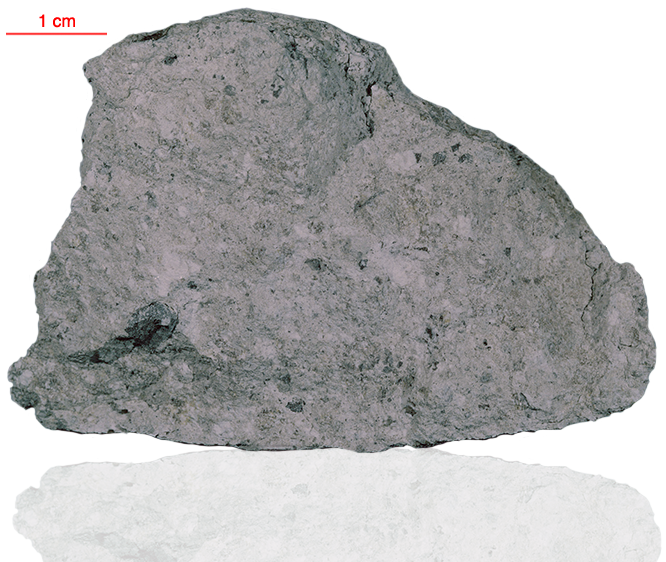
Fact sheet
67215 is a white polymict breccia made up of mostly calcic plagioclase and a few relict lithic clasts. The sample as a whole, is made up of a mix of highland rock types (anorthosite, norite, granulite, breccia etc.). The granulated white groundmass of 67215 has seriate grain size distribution. Grains are rounded and often have shock features. The mineral mode of the matrix is about 80% plagioclase, with ~20% olivine and pyroxene and trace amounts of ilmenite, troilite and metallic iron. Rotation 1 shows a gabbroic clast and rotation 2 a shocked plagioclase feldspar clast.
The sample weighed 273 grams before analysis and has been dated at 3.93±0.08 billion years (Ar/Ar).
Further details of this and other Apollo samples are here: http://curator.jsc.nasa.gov/lunar/
Our thin section is slightly thick, hence the yellow of plagioclase between crossed polars.
The Apollo 16 landing site was in the hilly region around Descartes crater in the lunar highlands. The landing spot was chosen to allow the astronauts to gather geologically older lunar material (Descartes Formation and the Cayley Formation) than the samples obtained in the first four landings, which were in or near lunar maria.
The mission lasted 11.1 days, with a stay on the lunar surface of 71 hours. The crew were on the lunar surface for 20.2 hours during which they traversed approximately 27 kilometers and collected approximately 96 kilograms of samples.
Apollo 16 was launched on 16 April 1972.






